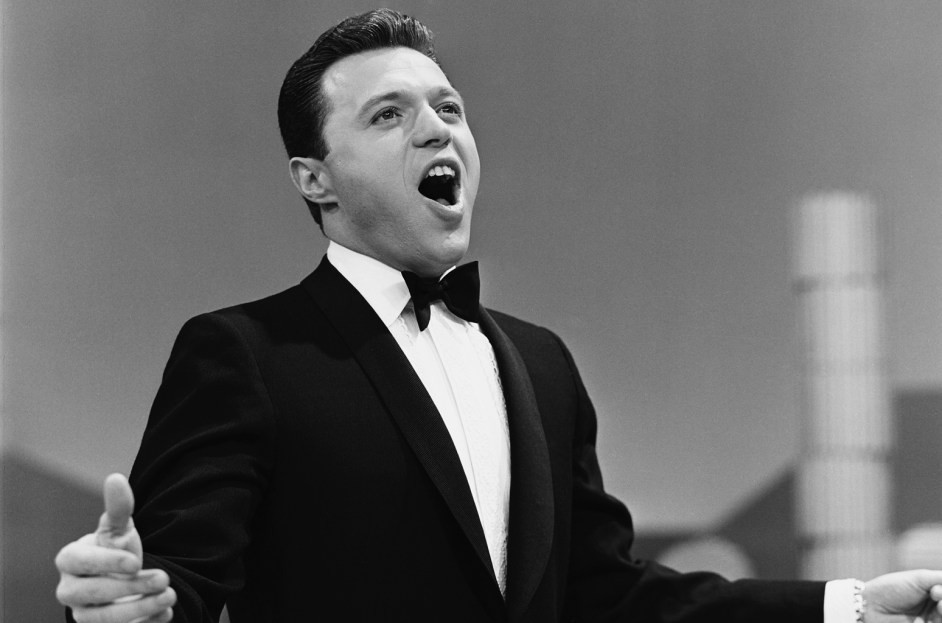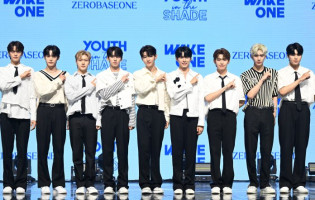Forever No. 1 is a Billboard series that pays special tribute to the recently deceased artists who achieved the highest honor our charts have to offer — a Billboard Hot 100 No. 1 single — by taking an extended look back at the chart-topping songs that made them part of this exclusive club. Here, we honor the late Steve Lawrence by looking at his sole No. 1 hit, the richly melodic but lyrically problematic “Go Away Little Girl.”
Steve Lawrence’s “Go Away Little Girl” topped the Billboard Hot 100 for two weeks in January 1963 — becoming the biggest hit for the smooth, romantic singer, who died on Thursday (March 7) at age 88 after a long battle with Alzheimer’s.
It was the fourth No. 1 in just under two years for legendary songwriters Gerry Goffin and Carole King, following The Shirelles’ “Will You Love Me Tomorrow,” Bobby Vee’s “Take Good Care of My Baby” and Little Eva’s “The Loco-Motion.”
“Go Away Little Girl” is easily the least “rock and roll” of the Rock and Roll Hall of Famers’ volley of four No. 1’s. The song showcases King’s melodic strengths, though Goffin’s lyric has not aged well. The lyric consists of a young man telling a young woman to stay away from him, so he won’t be tempted to betray his steady girlfriend by kissing her. (He calls her a “little girl,” which doubtless comes across as more patronizing — or worse — today than it did at the time.)
The most attractive aspects of the recording are the loping gait, which suggests a horse trotting around a track; the double-tracked lead vocal; and the modulation on the bridge: “When you’re near me like this/ You’re much too hard to resist.”
Vee, who had taken “Take Good Care of My Baby” to No. 1 in September 1961, was the first to record “Go Away Little Girl” (in March 1962). His version was not released as a single and the song landed with Lawrence, who was a 10-year veteran at that point. Lawrence had landed his first hit in 1952 with a cover version of Bing Crosby’s 1944 hit “Poinciana.”
Lawrence was 26 when “Go Away Little Girl” was a hit. But “Go Away Little Girl” isn’t really an adult song. It is, rather, a song about “young love and first crushes,” as Lawrence’s son David Lawrence said in the PBS documentary Steve Lawrence & Eydie Gormé: Memories of My Mom & Dad.
In that same doc, which premiered on Dec. 2, 2023, David Lawrence noted that his father could sing light pop songs like “Pretty Blue Eyes” (a top 10 hit in January 1960) and “Go Away Little Girl,” and also sing more sophisticated, jazz-accented fare like “I’ve Got You Under My Skin.” “He could sort of position his voice in more of a pop arena and then turn around and swing like nobody’s business,” David recalled. “That’s that I find most impressive – he’s so versatile.”
If “Go Away Little Girl” was lightweight material for a singer of Lawrence’s age and vocal abilities, why was it such a big hit? It’s a pretty song, with a lovely melody and a warm vocal — and in early 1963, a year before The Beatles electrified the music business, that was often enough to get you to No. 1.
Lawrence had had a string of three consecutive top 10 hits on the Hot 100 in 1960-61 (“Pretty Blue Eyes,” “Footsteps” and “Portrait of My Love,” the latter first recorded by British singer Matt Monro), but his recording career had cooled in 1962. He released three songs that didn’t make the top 40, followed by two that didn’t even make the Hot 100.
Lawrence signed with Columbia Records in 1962 after stints on King, Coral, ABC-Paramount and United Artists. His first release for Columbia wasn’t much of a hit: “The Lady Wants to Twist,” a trendy twist/swing number written by Jerry Leiber and Mike Stoller, “bubbled under” the Hot 100 at No. 120.
So, it wasn’t really a surprise when “Go Away Little Girl” entered the Hot 100 in the bottommost rung in the week ending Nov. 10, 1962. But the song quickly made up for that slow start: It vaulted from No. 41 to No. 20 in the week ending Dec. 8, then made the top 10 the following week. In the week ending Jan. 12, 1963, it reached No. 1, dislodging the Tornadoes’ instrumental smash “Telstar,” a three-week leader. “Go Away Little Girl” remained on top for two weeks before being dislodged by the Rooftop Singers’ folk ballad “Walk Right In.”
 Billboard
Billboard
Goffin and King also wrote several follow-up singles for Lawrence, including “Poor Little Rich Girl,” “Walking Proud,” “I Want to Stay Here” and “I Can’t Stop Talking About You” (the latter two were credited to Steve & Eydie).
Lawrence had five more top 40 hits on the Hot 100 after “Go Away Little Girl,” though he never returned to the top 20. His last Hot 100 hit was “We Can Make It Together” in 1972, a collab with his wife and The Osmonds.
A 1966 remake of “Go Away Little Girl” by The Happenings, released as the follow-up to their smash “See You in September,” reached No. 12 on the Hot 100. The peppy record echoes the hit sound of Frankie Valli & the Four Seasons.
In September 1971, less than nine years after Lawrence’s single topped the Hot 100, a remake of the song by Donny Osmond also reached No. 1 on the Hot 100, making it the first song to top Billboard’s flagship songs chart by two different artists. Just eight other songs have subsequently equaled that feat – and no other pair of songs has reached No. 1 in such quick succession.
Osmond was 13 when “Go Away Little Girl” was a hit, making the song more age-appropriate for him than it had been for Lawrence. Osmond tweaked the lyric from “I belong to someone else and I must be true” to “I’m dating somebody else – I must be true.” Apparently, 13 was deemed too young by some in Osmond’s camp to “belong to someone else.”
While “Go Away Little Girl” was Lawrence’s biggest hit single, it wasn’t his most lasting claim-to-fame. He is better-known and remembered for his role in popularizing such standards as “More” and “I’ve Gotta Be Me” and for his decades-long partnership with his wife, Eydie Gormé. The couple did some of their best work on a string of classy TV specials in the 1970s celebrating the music of George & Ira Gershwin, Cole Porter and Irving Berlin. They won a Primetime Emmy in 1979 for Steve & Eydie Celebrate Irving Berlin, which featured Carol Burnett, Sammy Davis Jr. and jazz pianist Oscar Peterson.








